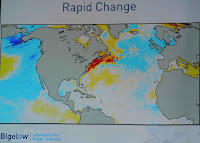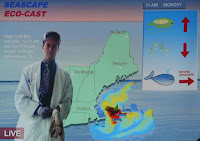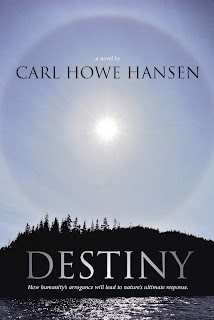 |
| Crustacean larvae full of plastic microbeads |
Recent research suggests that the key attraction of the plastic bits to fishes, birds and invertebrates is the flavor/odor of the biofilm of bacteria that has colonized these plastic particles as solid habitats.
Like other organisms, bacteria eat and breathe and emit wastes andsignaling chemicals. Those emissions are attractive to animals from protozoa to invertebrates and vertebrates, who treat the plastic particles as though they were mini-wontons or micro- matzo balls.
Since we won't be training Mother Nature to avoid plastic, and we aren't likely to stop manufacturing and using the stuff any time soon, can we make plastic unattractive to microbes?
Plastic makers have been required to tweak their products chemistry to protect public health, so it is not impossible to require plastic people to make their stuff unattractive to marine bacteria, or freshwater ones.
 |
| Pastic-filled bird carcass & plastics taken from it |
But that raises more questions:
While you _could_ add an antibacterial to the plastic, the ubiquity of the plastic bits in the bays and seas is such that you would be filling the water column with antibacterial chemical-emitting particles - specifically geared toward repelling or killing natural marine or freshwater bacteria that live there.
While you _could_ add an antibacterial to the plastic, the ubiquity of the plastic bits in the bays and seas is such that you would be filling the water column with antibacterial chemical-emitting particles - specifically geared toward repelling or killing natural marine or freshwater bacteria that live there.
That's not a good way to go.. How else to make plastic unappealing to marine bacteria?









